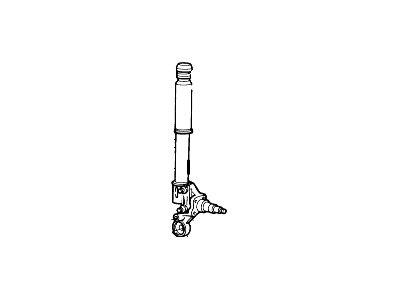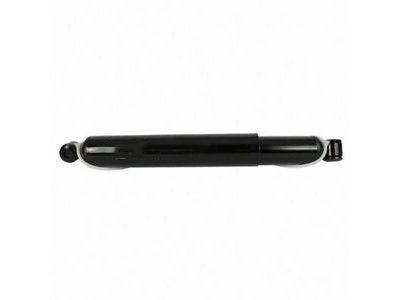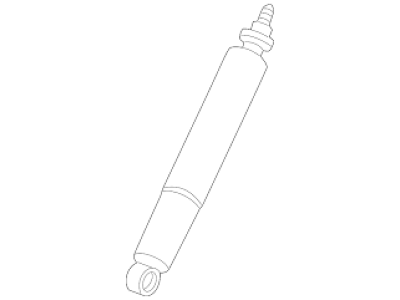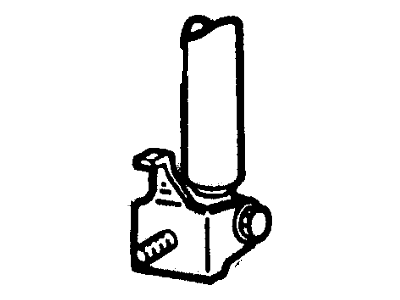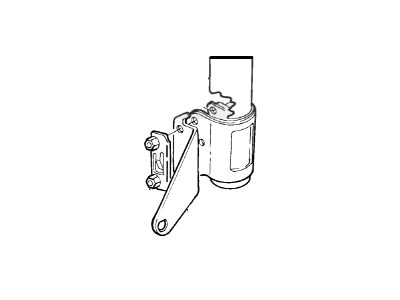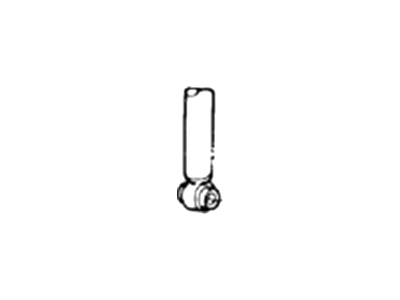

My Garage
My Account
Cart
Genuine Lincoln Mark VII Shock Absorber
Suspension Shock Absorber- Select Vehicle by Model
- Select Vehicle by VIN
Select Vehicle by Model
orMake
Model
Year
Select Vehicle by VIN
For the most accurate results, select vehicle by your VIN (Vehicle Identification Number).
6 Shock Absorbers found
Lincoln Mark VII Shock Absorber Assembly
Part Number: FOAZ-18125-A$99.98 MSRP: $136.61You Save: $36.63 (27%)
Lincoln Mark VII Shock Absorber
The Shock Absorber is quite important in the Lincoln Mark VII automobile, primarily in the conventional suspension system in cooperation with the struts or shock absorbers. Such parts assist in reducing hop and taking impulses in order to provide better ride comfort and vehicle control. Based on improvements in shock absorber linkage, shock absorbers have various types that are manufactured with twin tube and mono tube construction to control the hydraulic fluid and operate in different driving conditions. Moreover, new inventions like the electrorheological and magnetorheological dampers have enabled the semi-active and adaptive strategies for suspension systems to provide comfort and control besides on the road.
We provide a wide range of Lincoln Mark VII Shock Absorber at the best prices possible. If you need Lincoln Mark VII Shock Absorber, you can shop with confidence on our website. All our OEM parts come with a manufacturer's warranty and are delivered to your door step with a fast delivery service.
Lincoln Mark VII Shock Absorber Parts Questions & Experts Answers
- Q: How to remove and install a front shock absorber on Lincoln Mark VII?A:Remove the shock absorber's upper nut, washer, and bushing. Lift the vehicle and secure on jackstands. Detach the two bolts connecting the shock absorber to the lower control arm and remove it. Check the bushings and grommets for damage and replace if needed. Install a new, air-bled hydraulic shock absorber. Reinstall all bushings and grommets in their original order. Use a floor jack to lift the lower control arm if needed. If threads in the arm are damaged, use locknuts on the bolts. Tighten all fasteners to the required torque.
- Q: Is it necessary to periodically check the steering linkage,Shock Absorber and suspension components for potential issues that can affect tire wear, ride quality, fuel economy, and vehicle handling on Lincoln Mark VII?A:The steering linkage and suspension components should be checked periodically as worn or damaged components can lead to excessive tire wear, poor ride quality, reduced fuel economy, and compromised vehicle handling. To check the shock absorbers, park the vehicle on level ground, turn off the engine, and set the parking brake. Push down at each corner of the vehicle and observe if it stops moving and returns to a level position within one or two bounces. If the vehicle continues to move or fails to return to its original position, it may indicate worn or weak shock absorbers. Raise the vehicle and inspect the shock absorbers for fluid leakage, ensuring that any fluid noted is from the shocks and not from another source. Replace the shocks as a set if leakage is present. Additionally, check the shock absorbers for secure mounting and any signs of damage. For the steering and suspension check, visually inspect the components for damage, leaks, and worn seals, boots, and fittings. Clean the lower end of the steering knuckle and have an assistant move the wheel in and out while checking for movement at the steering knuckle-to-control arm balljoint. If there is any movement, the suspension balljoint(s) should be replaced. Grasp each front tire at the front and rear edges, push in at the front and pull out at the rear to feel for play in the steering system components. If any play is noted, check the steering gear mounts and tie-rod ends for looseness. Finally, check the steering gear mount bolt tightness and if the tie-rods are loose, the balljoints may be worn.
- Q: How to replace front struts on Lincoln Mark VII?A:This procedure is specific to 1982 through 1987 Continentals and 1984 through 1992 Mark Vlls. The struts on these models cannot be serviced and must be replaced as complete assemblies. To begin, loosen the front wheel lug nuts and raise the vehicle, supporting it securely on jackstands. Remove the wheel and the disc brake caliper, hanging it out of the way with wire. Place a floor jack under the lower control arm and raise it slightly. Unscrew the three upper mount to strut tower retaining nuts, and if the upper mount is to be removed from the strut assembly, loosen the center nut. Remove the strut to steering knuckle nuts and bolts, separating the two components and lifting the strut out of the wheel well. If the upper mount is to be replaced, remove the center retaining nut and slide off the mount. To install, place the upper mount over the top of the strut and install the nut if it was removed. Guide the strut assembly into position in the wheel well, pushing the upper mount studs through the holes in the shock tower. Install the three nuts and tighten them to the specified torque. Insert the steering knuckle into the lower mounting flange of the strut assembly and install the two bolts, using new bolts and nuts if recommended. Tighten the nuts to the specified torque. Finally, tighten the upper mount to strut assembly retaining nut to the specified torque. Remove the jack from under the control arm and install the disc brake caliper. Install the wheel, lower the vehicle, and tighten the lug nuts to the specified torque.
- Q: How to remove and install a rear hydraulic shock absorber on a Lincoln Mark VII with air suspension?A:Turn off the Air Suspension and disconnect the height sensor. Support it on jack stands and let the rear axle hang free until the shock absorbers vent. Compress the shock to remove the inner insulator and washer. Remove the side trim panel from the trunk to access the upper mounting nut. Remove the lower retaining nut or bolt and the shock absorber. Before installing a new shock, expel all air by extending and compressing it. Insert the shock rod through the upper mounting hole in the frame, and install the outer insulator, washer, and a new stud retaining nut. Align the lower shock eye in the bracket and install the bolt and nut. Extend the shock, insert the lower shock stud through the hole in the bracket, and install a new self-locking retaining nut. Attach the airline, remove the jack stands, and lower the vehicle.
